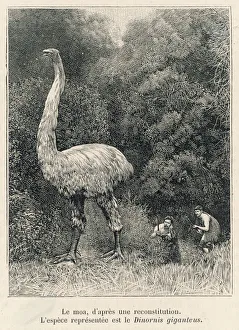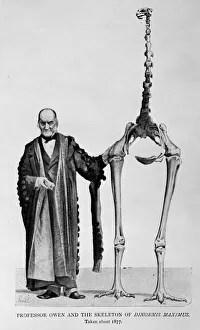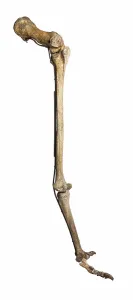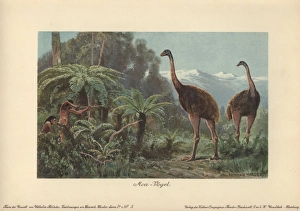Dinornis Collection
"Dinornis: The Majestic Giants of the Past" Step back in time and discover the incredible world of Dinornis, a group of extinct flightless birds commonly known as Moa
All Professionally Made to Order for Quick Shipping
"Dinornis: The Majestic Giants of the Past" Step back in time and discover the incredible world of Dinornis, a group of extinct flightless birds commonly known as Moa. These magnificent creatures once roamed the lands of New Zealand, captivating both scientists and enthusiasts alike. Sir Richard Owen (1804-1892), a renowned British paleontologist, first classified these fascinating creatures. He named them Dinornis, derived from Greek words meaning "terrible bird. " With their towering height and impressive size, it's no wonder they earned such a fearsome title. Among the various species that existed, Aepyornis ingens was one of the most remarkable. Known as the South Island Giant Moa or Dinornis robustus, this particular breed possessed an imposing right leg discovered at Castle Hill Station in Canterbury on New Zealand's South Island. The Canterbury Museum proudly showcases remnants of these prehistoric animals through engravings and lithographs. Visitors can marvel at illustrations depicting Moa-Birds and skeletons found within its walls. The museum also houses an engraving showcasing the skeleton held by none other than London's Royal College of Surgeons. These engravings provide us with glimpses into what life may have been like during this ancient era. They depict massive birds with long legs and powerful bodies roaming vast landscapes that are now lost to time. Sadly, today we can only imagine witnessing these giants firsthand as they became extinct centuries ago due to human activity and environmental changes. However, their legacy lives on through scientific discoveries and our ongoing fascination with these colossal avian beings. Let us continue to explore their history while cherishing our responsibility to protect Earth's precious biodiversity for future generations – ensuring that no more majestic creatures like Dinornis fade away into oblivion.





























